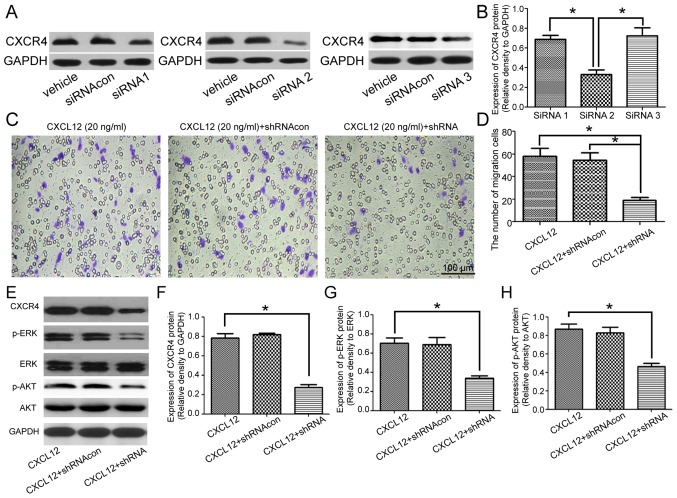Figure 3.
Knockdown of CXCR4 inhibits the CXCL12-induced migration of OPCs. (A) Western blot analysis demonstrated the expression of CXCR4 in the OPCs treated with vehicle (PBS), siRNAcon and each siRNA (siRNA1, siRNA2 and siRNA3). (B) Relative expression of CXCR4 in the OPCs treated with siRNA1, siRNA2 and siRNA3. (C) Transwell migration assay of OPCs treated with CXCL12 (20 ng/ml) and CXCR4 shRNA or shRNAcon. (D) Analysis of the migration data for each group. (E) Western blot analysis demonstrated the expression of CXCR4, p-ERK, ERK, p-AKT and AKT in the OPCs treated with CXCL12 (20 ng/ml) and CXCR4 shRNA or shRNAcon. GAPDH served as a loading control. (F) Group data for the relative expression of CXCR4. (G) Group data for the relative expression of p-ERK. (H) Group data for the relative expression of p-AKT. Data are presented as the mean ± standard deviation. n=3. *P<0.05. CXCL12, C-X-C motif chemokine ligand 12; CXCR4, C-X-C motif chemokine receptor 4; siRNA, small interfering RNA; con, control; shRNA, short hairpin RNA; OPCs, oligodendrocyte precursor cells; p, phosphorylated; ERK, extracellular signal-regulated kinase; AKT, RAC-α serine/threonine-protein kinase.

